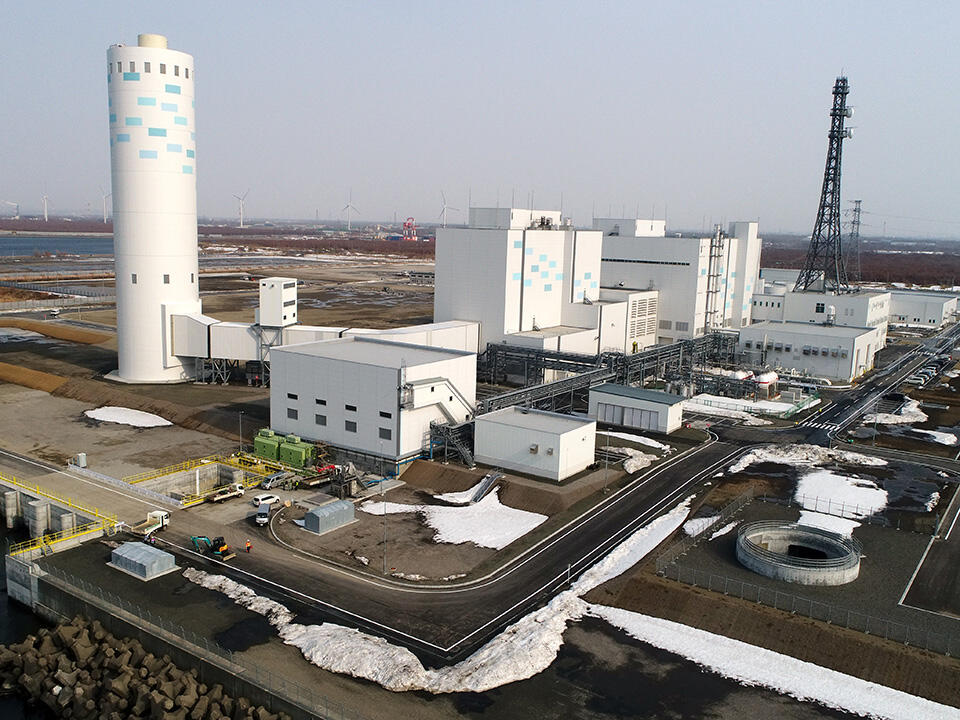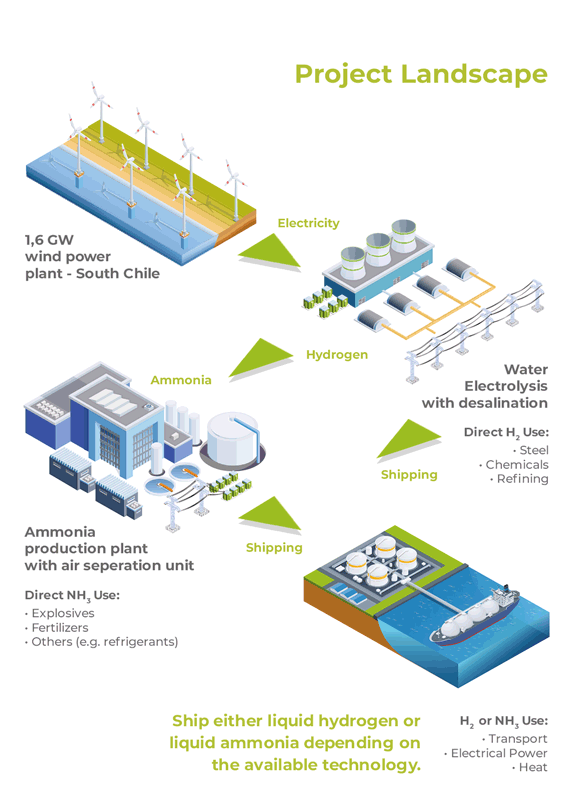The Ammonia Wrap: OCI to charter ammonia-fueled vessels, Japanese CCGT units await ammonia, more green ammonia for Chile, new South Korea and Uruguay updates
By Julian Atchison on March 10, 2021
Welcome to the Ammonia Wrap: a summary of all the latest announcements, news items and publications about ammonia energy.
OCI to charter ammonia-fueled vessels
OCI NV — the world’s fourth largest ammonia producer — announced two new, exciting agreements this week:

- OCI will supply ammonia and methanol fuel to power retrofitted MAN ES engines in existing vessels owned by Eastern Pacific Shipping (EPS) as part of a multilateral MoU. EPS will also construct new vessels powered by MAN ES methanol and ammonia dual-fuel engines, to be chartered by OCI after launch.
- And, in a second multilateral MoU, OCI will charter ammonia-fueled vessels built, owned and operated by the Hartmann Group and powered by MAN ES engines. MAN ES expects delivery of its first new build ammonia engines in 2024, with retrofit alternatives available sooner.
New carbon-free maritime fuels forecast

A new roadmap from UMAS and the Getting to Zero Coalition forecasts new, key milestones for the adoption of zero-carbon fuels by the shipping sector so it stays aligned with the Paris Agreement — 5% by 2030, 27% by 2036, and 93% by 2046. UMAS & GTZ see three primary avenues to drive the immediate 2030 milestone: container shipping, ammonia & LNG tankers and “niche” international routes (non-container).
Hokkaido Electric postpones CCGT deployment, awaits ammonia

Japanese utility Hokkaido Electric Power decided to postpone the start-up of two CCGT units at its Ishikariwan-Shinko power station to study the possibility of burning hydrogen and ammonia at the site instead. The decision comes on the back of Mitsubishi Power’s public statement that they intend to reach commercialisation with a 100% ammonia-fed gas turbine around 2025, and recent investments by parent company Mitsubishi Heavy Industries in clean hydrogen and ammonia supply chains.
More green ammonia for Chile

One older project we haven’t yet reported on but is still significant! AustriaEnergy (known as AustriaSolar until recently) plans to construct an 850,000 tonne per year green ammonia production plant in Chile, with the potential to expand multiple-fold. The plant will be powered by 1.6GW on-shore wind power, with project partner Ökowind already confirmed.
And South American power utility AES Gener announced at least 850MW of new build renewable power generation will be required to feed a new green ammonia project in Chile. The exact location and project partners are withheld for now, but all indications are the ammonia is intended to be used for maritime fuel (with green hydrogen produced at the site destined for transport fuel applications). Chile’s Minister of Mining and Energy Juan Carlos Jobet said he wasn’t surprised companies from around the world were “betting on Chile”, and that he believed his country had the “capabilities to be the cheapest producer (of green hydrogen) in the world by 2030.”
Net-zero Teesside to include CF Industries ammonia production
A new proposal to divert industrial emissions via a carbon capture pipeline along the Tees River in England includes CF Industries Billingham ammonia plant. David Hopkins, Managing Director for Britain of CF Fertilisers, estimates the plant may end up sending 700,000 tonnes of carbon dioxide a year for sequestration.
Northern Lights update
And, in further CCS news, the Norwegian government has given its approval for the Northern Lights carbon storage project to proceed after several years of negotiation.
South Korea
Hyundai Heavy Industries (HHI) and Saudi Aramco signed a new MoU this week to cooperate on R&D for low-carbon ammonia. Though not a commercial agreement at this stage, HHI subsidiary Hyundai Oilbank plans to receive blue ammonia from Aramco by 2024 to burn in converted LNG boilers for power generation.
Abu Dhabi National Oil Company (ADNOC) is teaming up with South Korea’s GS Energy to explore opportunities to grow Abu Dhabi’s hydrogen economy. The agreement seeks to develop supply chains for blue hydrogen and carrier fuels such as blue ammonia.
Uruguay

Uruguay’s state-run oil major Ancap has called for government and private investment support to help make the country a major hydrogen & ammonia exporter by 2030. Although Uruguay is already an energy exporter, the country is currently unable to take full advantage of a significant surplus of renewable electricity generated every year. Ancap chairman Alejandro Stipanicic strongly advocates using this “glut of clean energy” to produce clean hydrogen and ammonia, which can be exported via Uruguay’s deep water Atlantic seaport in Montevideo.
Sign up for weekly AEA updates
Make sure you’re signed up for AEA email updates, including our weekly newsletter featuring wrap articles just like this one.